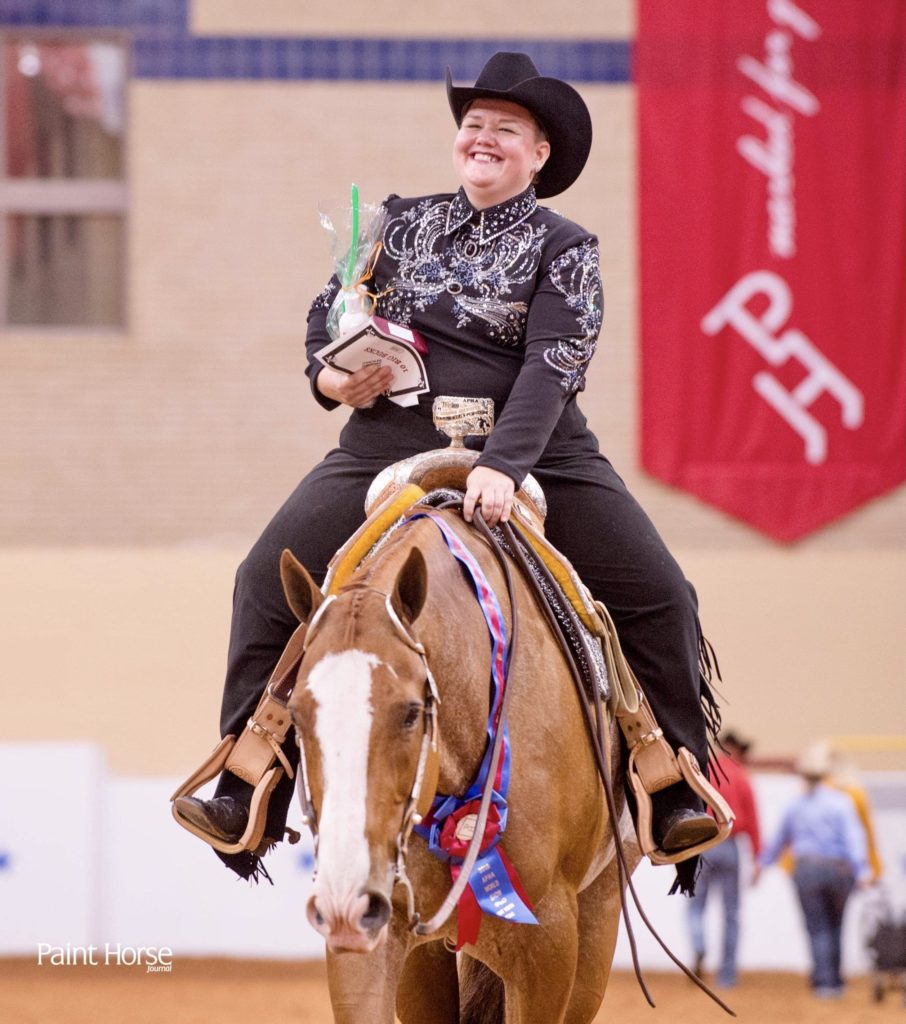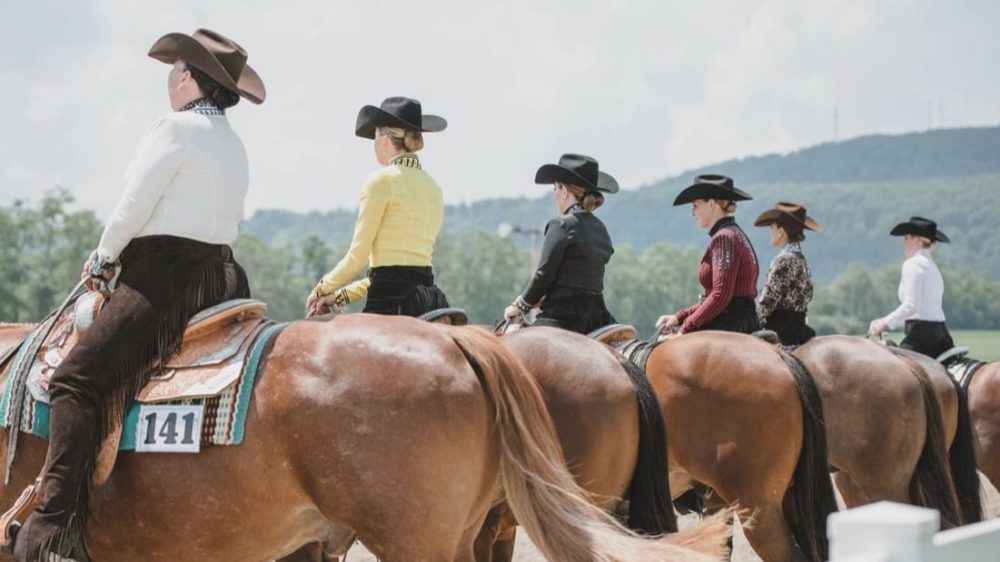A trend is emerging at major shows where some of the largest classes consistently come from the adult walk/trot division.
Initially, the walk/trot classes were viewed with skepticism by exhibitors, trainers, and the associations themselves as unlikely to draw a crowd due to a stereotype that real competitors wouldn’t be interested in classes seen as “less challenging.”
However, these classes are fast becoming some of the most competitive across multiple breed associations due to their inclusive approach to horse showing. The walk/trot division helps exhibitors and their horses build confidence, while still allowing them to be a part of major shows.
We spoke to Mike Weaver (Mike Weaver Performance Horses), Anthony Wilson (Wilson Performance Horses), Deborah Casaubon (Overall Res. High Point AQHA World Show W/T Exhibitor and Multiple APHA W/T World Champion), and Sabrina Seehafer (APHA World W/T All-Around Champion and Multiple APHA W/T World Champion) about the many benefits of the walk/trot division and why they hope to see it continue to gain traction across associations.
 Mike Weaver: Weaver is a fan of the AQHA walk/trot division, saying, “[It] presents exhibitors with great entry-level experiences in the horse showing world.” Specifically, Weaver believes it is a great way to get people into the sport or welcome them back after years of absence.
Mike Weaver: Weaver is a fan of the AQHA walk/trot division, saying, “[It] presents exhibitors with great entry-level experiences in the horse showing world.” Specifically, Weaver believes it is a great way to get people into the sport or welcome them back after years of absence.
Weaver says that there is so much physicality and experience to keep a horse correct at the lope and even the canter, it can be intimidating to new and older riders. He believes that the walk/trot classes provide more senior exhibitors a means of remaining competitive as they age.
While aging adds experience, he admits that physical limitations come with aging, including a loss of leg strength. Nevertheless, Weaver has found the division to be very popular with senior riders who would have quit showing due simply to the effects of aging.
Weaver also loves that the walk/trot division helps save new exhibitors from some of the “sticker shock” of showing that turns people off to the highest levels of the pleasure horse industry. Specifically, top-level walk/trot horses tend to be more affordable than their loping counterparts.
 Anthony Wilson: Wilson has also had many clients benefit from the inclusivity of the walk/trot offerings.
Anthony Wilson: Wilson has also had many clients benefit from the inclusivity of the walk/trot offerings.
“I’ve had several walk/trotters over the years, and many of them were older amateurs who had never ridden or they were riders that hadn’t ridden since they were kids. So the walk/trot classes gave many of them a place to learn and get stronger and then move into the novice amateur division or master’s division.”
Wilson believes walk/trot offerings serve two primary purposes for riders: (1) it functions as a great launchpad to get new riders into showing without forcing them into a division they aren’t ready for; or (2) it creates a home for riders who want to show but are unable to lope due to various limitations. He specifically recalls a dear friend and client who was able to show through a terminal cancer diagnosis by competing in the walk/trot division. While she sadly succumbed to the disease, she continued living her love of horses and showing all because of the walk/trot classes.
Deborah Casaubon: Casaubon’s story is one that many of her fellow baby boomers can identify with. She was a horse-lover from early childhood, but her parents couldn’t afford a horse, so she spent her youth admiring horses, but not spending any time around them.
 However, she eventually found her way to horses when she was in her fifties. She has now become a highly successful walk/trot competitor in both APHA and AQHA.
However, she eventually found her way to horses when she was in her fifties. She has now become a highly successful walk/trot competitor in both APHA and AQHA.
While Casaubon feels the walk/trot division was initially looked down upon as the “training wheels division,” she believes its immense popularity is due to its inclusive nature. It allows riders of different experience levels, incomes, and physical limitations to participate in the fun.
Casaubon insists that baby boomers like her are an excellent market for associations to capitalize on through walk/trot offerings. Her fellow boomers are a large demographic with the discretionary income and the time to be involved in the sport. In addition, she loves that the division allows her to be happy as an equestrienne, even when she isn’t pleased with her body’s capabilities.
Casaubon admits that the aging process can be mentally tricky because you can work harder, and your body doesn’t always cooperate. “However, walk/trot opens the doors for people who are dealing with sickness, body changes, or anxiety,” and it still allows them to be competitive. The class offerings are becoming more extensive, more competitive, and are well-received such that “it’s not the training wheels division anymore.”
 Sabrina Seehafer: Seehafer’s story is another familiar tale of a rider that, if it weren’t for the walk/trot division, likely would not show at the breed show level.
Sabrina Seehafer: Seehafer’s story is another familiar tale of a rider that, if it weren’t for the walk/trot division, likely would not show at the breed show level.
Upon returning to showing after a long break from the show pen, she attempted a novice amateur APHA class and realized that riding had changed dramatically from her 4-H days (nearly two decades prior). She found it challenging to help her horse maintain a lope down the rail due to her inexperience and lack of leg strength. The walk/trot division offered her the perfect opportunity to show at her level, while enjoying competing in breed shows with her sister.
Seehafer believes the division has brought life back into local APHA clubs struggling with attendance at their shows because it opens the doors of breed shows to people who otherwise would not be capable. Many APHA walk/trot exhibitors are DIY-amateurs who maintain their horses primarily at home and take lessons to prepare for shows. Seehafer estimates around half of the division is populated by DIY-ers, which she believes is a significant credit to walk/trot and is an attraction for people looking to dip their toe in the breed show pen without investing so much money.
Overall, Seehafer believes the division is genuinely the friendly face of the breed show. People feel welcome to compete at their level on a smaller budget, with a horse that otherwise could not show in the three-gaited classes. In addition, she says most competitors are incredibly friendly and supportive of one another because they’re just happy to be a part of the community and show the animals they love.
***
Ultimately, many associations have reported concerns over decreased attendance at major shows. Perhaps one of the best ways to boost show attendance is by allowing more people with differing skills, income, and experience levels to participate. Additionally, allowing horses to compete in a division that doesn’t require them to lope, adds value and longevity to animals that otherwise would not be deemed suitable contenders for top-level shows.
Therefore, it is no surprise that riders, trainers, and maybe even the animals themselves are loving the walk/trot offerings. This more inclusive division seems well on its way to becoming one of the most competitive and well-attended classes across breeds.








